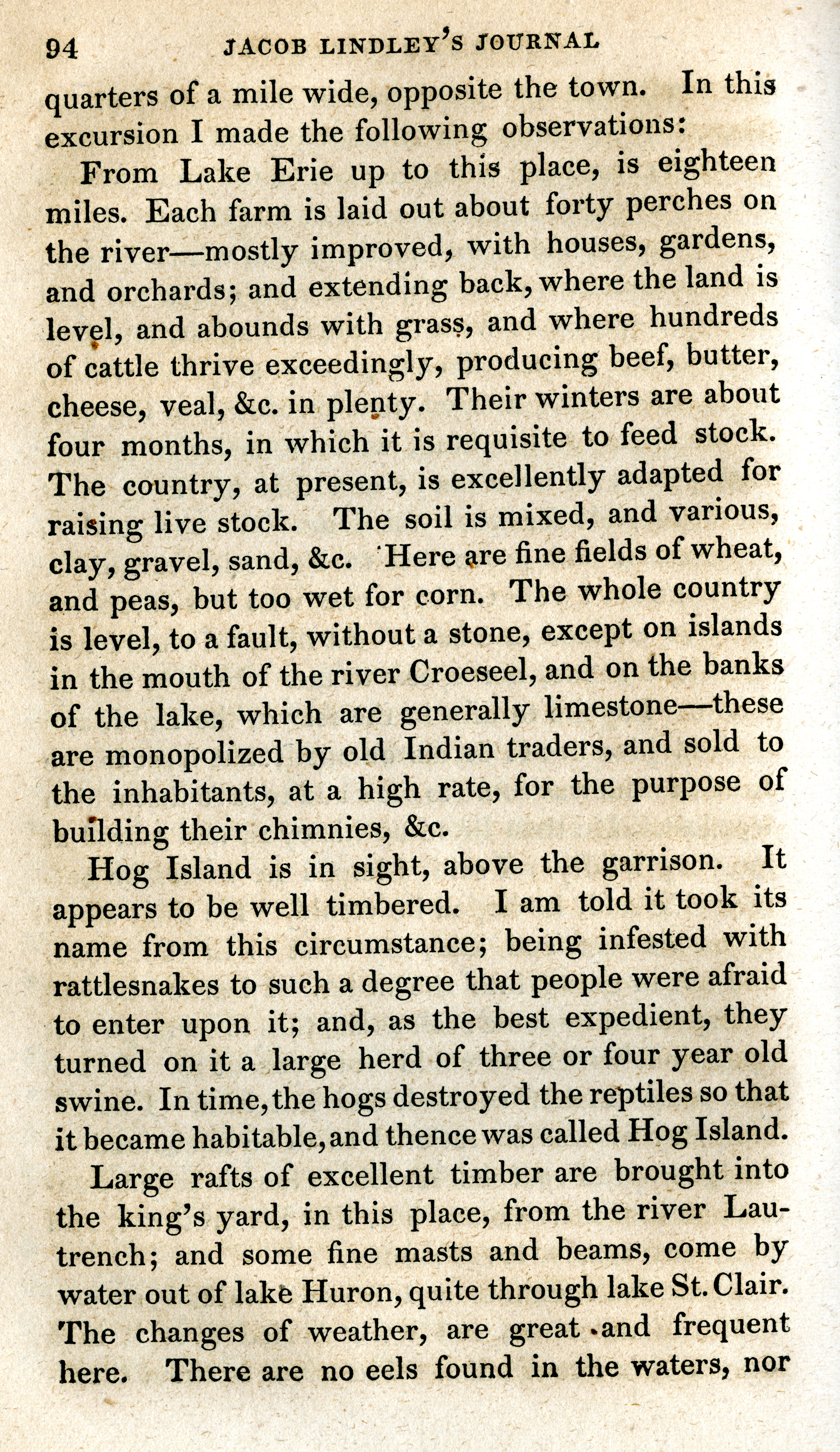quarters of a mile wide, opposite the
town. In this
excursion I made the following observations:
From Lake Erie up to this place, is
eighteen
miles. Each farm is laid out about forty perches on
the river
— mostly improved, with houses, gardens,
and orchards; and extending back,
where the land is
level, and abounds with grass, and where hundreds
of
cattle thrive exceedingly, producing beef, butter,
cheese, veal, &c. in
plenty. Their winters are about
four months, in which it is requisite to
feed stock.
The country, at present, is excellently adapted for
raising live stock. The soil is mixed, and various,
clay, gravel, sand,
&c. Here are fine fields of wheat,
and peas, but too wet for corn. Tile
whole country
is level, to a fault, without a stone, except on
islands
in the mouth of the river Croeseel, and on the banks
of the
lake, which are generally limestone — these
are monopolized by old Indian
traders, and sold to
the inhabitants, at a high rate, for the purpose
of
building their chimnies, &c.
Hog Island is in sight, above the garrison.
It
appears to be well timbered. I am told it took its
name from this
circumstance; being infested with
rattlesnakes to such a degree that people
were afraid
to enter upon it; and, as the best expedient, they
turned
on it a large herd of three or four year old
swine. In time, the hogs
destroyed the reptiles so that
it became habitable, and thence was called
Hog Island.
Large rafts of excellent timber are brought into
the king's yard, in this
place, from the river Lau-
trench; and some
fine masts and beams, come by
water out of lake
Huron, quite through lake St.
Clair.
The changes of weather, are great and frequent
here. There are no eels found in the waters, nor

